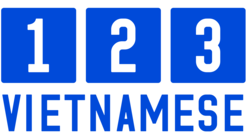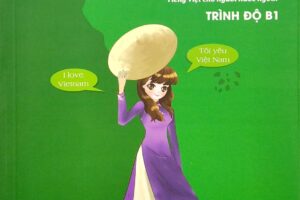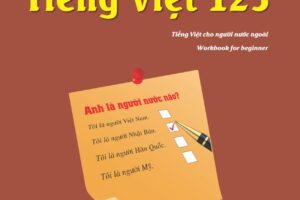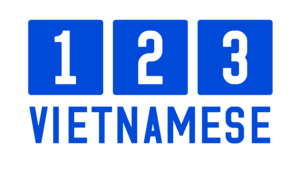![Studying Vietnamese through English - Mai Ngoc Chu 1 Studying Vietnamese through English [Learning Vietnamese Book]](https://123vietnamese.com/wp-content/uploads/2015/04/Studying-Vietnamese-through-English-Learning-Vietnamese-Book_Vietnamese-for-Beginners-3.jpg)
Studying Vietnamese through English – Mai Ngoc Chu
| Name | Studying Vietnamese through English |
| Language | English & Vietnamese |
| Physical Description | Paperback; 535 pages |
| Author | Mai Ngoc Chu (Mai Ngọc Chừ) |
| Publisher | NXB Thế giới |
| Edition | 10th edition (revised and amended) |
| Price | Updating … |
| Carrier Types | 01 CD |
FOREWORD
In order to have a preliminary and general image of this book, you are advised 1) to read the Foreword carefully 2) to skim through the Contents (in English at the beginning and in Vietnamese at the end of the book) and 3) to try to read any of the 26 lessons in the book. This should help you decide whether this book would meet your need or not. You will also discover that this book is different from others (Including “Vietnamese for foreigners” written by the same author, published in 1995 and 1996).
This book is written for foreigners studying Vietnamese not only in Vietnam but also in other countries and for those who want to study by themselves. The author`s experience in teaching Vietnamese to foreigners in Vietnam and also learners overseas has shown that if a textbook is too difficult and complicated, learners find it difficult to digest. So, although they have finished a course, they are still unable to speak Vietnamese. Thus this book has been simplified to make learning easier and much explanation is given in English.
This is a modem Vietnamese textbook written for people today. In addition to familiar topics such as “shopping”, “eating – drinking”, “traffic”, “health”, “sports”, etc., there are also new topics (which have never appeared in the other textbooks published in Vietnam before) such as “telephoning”, “bank – currency”, etc.
Each lesson in this book consists of six sections Conversations, Grammar, Practice.Reading comprehension, Exercises and Key to the exercises.
Sections I (Conversations) rather sufficiently contains everyday communication situations. Following this section, you can talk with Vietnamese about various aspects of daily life. The sentences in this section possess a clear Vietnamese “speaking style”, so if you study this section well, you can speak Vietnamese like the Vietnamese.
Section II (Grammar) contains grammatical structures very carefully explained with many concrete examples. This section will help you to speak and write Vietnamese more accurately.
Section III (Practice) consists of both conversational and grammatical drills. The conversational drills will follow the topic of each lesson. You will be given the words which are commonly used and according to the topics. Then you will use these words to practice. For example, in lesson 20 (At the hospital), you will know the names of the wards, names of diseases and medicines, then you will practice to speak to doctors.
Section IV (Reading comprehension) also follows the lessons topic. For example, the topic of lesson 11 is “Communication – Traffic”, Reading comprehension is “Airlines and Air accidents”
At the end of this book (in ANNEX II) twenty three short, simple but amusing tales have been included. After reading and listening to them, you should be able to retell the stories. This is a very interesting way of studying a foreign language. It is very easy for you to remember new words and to practice them.
Section V (Exercises) and section VI (Key to the exercises) have a close relation. After doing the exercises carefully, you can compare your results with the answers in the section “Key to the exercises” to find out your mistakes (if there are any)
In Vietnam there are two main centres having Vietnamese language courses: Hanoi Capital and Ho Chi Minh City. Generally, Vietnamese is a united language, so when people in Hanoi speak, those in Ho Chi Minh city can understand them easily, and vice versa. However, these are some words which are different (but of the same meaning) used in Hanoi and in Ho Chi Minh city. For example, for the word “expensive”, in Hanoi “đắt” is used very often, in Ho Chi Minh city, “mắc” is used. In order to help foreigners studying Vietnamese in Ho Chi Minh city understand “Hanoians`s language” and foreigners studying Vietnamese in Hanoi understand Ho Chi Minh city`s “dialect”, different words used in these two cities have been listed in ANNEX I. After learning by heart these words, yours communication should become more effective throughout the country.
CONTENTS
Lesson 1: HELLO
| Conversations | Grammar | Reading Comprehension |
| Meeting people in the street Meeting people at a new house party Meeting people at the office | Personal pronouns Greetings The word indicating the plural number The word indicating respect Way of telling about professions Saying good – bye | Occupations |
Lesson 2: WHAT IS YOUR NATIONALITY?
| Conversations | Grammar | Reading comprehension |
| At the International Club At the party on Vietnam National Day occasion in Hanoi | Making introductions Way of telling about one`s name Way of telling about one`s nationality The question – tag “phải không?” The words “cũng” (also) and “đều” (all) The words “chúng tôi” and “chúng ta” | We study Vietnamese |
Lesson 3: INQUIRING AFTER THE FAMILY
| Conversations | Grammar | Reading comprehension |
| How old are you? Are you married? How many children have you got? | Way of telling about one`s age Way of telling about one`s marriage Cardinal number | My intimate friends |
Lesson 4: WHO IS THIS?
| Conversations | Grammar | Reading comprehension |
| Introducing people in the album Back to one`s home village with a friend | Usage of the word “mình” (I) The meanings of the word “uncle” Sentences with predicative verbs The questions with the word “đâu” (where) | My family |
Lesson 5: WHAT?
| Conversations | Grammar | Reading comprehension |
| At Thao Cam Vien Park At the exhibition At a shop | The classifiers “cái” and “con” The words “đây” (this) and “kia” (that) Sentences with predicative adjectives The words “rất”, “lắm”, “quá” (very) | The Thu Le Park |
Lesson 6: WHICH MOUNTAIN IS THE HIGHEST?
| Conversations | Grammar | Reading comprehension |
| On the flight to Hanoi Capital At the friend`s house | Adverbs of comparison The meanings of the word “nào” (which, any) Ordinal number | The world`s tallest building |
Lesson 7: IT IS FRIDAY TO DAY
| Conversations | Grammar | Reading comprehension |
| What is the date today? What is the month? Talking on the road | Way of telling the days of a month The different time of the day The days of a week The future tense, the present tense and the past tense The questions with “bao giờ”, “khi nào” (when) | Holidays in Vietnam |
Lesson 8: ASKING TIME
| Conversations | Grammar | Reading comprehension |
| On the road to the university Asking time in the bus At the office Before classes | Way of telling the time Way of telling the seasons of a year The words “khoảng”, “chừng”, “độ” (about) The words “vừa”, “mới”, “vừa mới” (just) How long? Adverbs of manner | My working day |
Lesson 9: ON THE FLIGHT TO OSAKA
| Conversations | Grammar | Reading comprehension |
| Asking about flights Checking in At the Airport Immigration At the Customs Office | Usage of the words “mấy” and “nhiêu” (how much, how many) The questions with the words “sao”, “vì sao”, “tại sao” (why) The words “ngoài”, “trừ” (except) The complex sentences with “Nếu ……thì……..” (If) The sentences with “Ngoài…….ra……..còn…….” (Apart from………also………) The meanings of the word “thấy” (see, f ell, think) | Noibai International Airport |
Lesson 10: I HAVE LOST MY WAY
| Conversations | Grammar | Reading comprehension |
| Asking the way to o hotel Asking the way to the Embassy Asking the way to Danang city | How far? What for? The meanings of the word “bằng” (by, in, with, of) The meanings of the word “cách đây” (from here, ago) Usage of the words “được” and “bị” | Way to the West lake |
Lesson 11: COMMUNICATION – TRAFFIC
| Conversations | Grammar | Reading comprehension |
| Where to go? How to go? At the Hanoi railway station Calling a taxi | Usage of the word “có thể” (can, maybe) The words of direction The words “nên” (should), “cần” (need), “phải” (must) (come back…..from) | Airlines and air accidents |
Lesson 12: RENTING A ROOM
| Conversations | Grammar | Reading comprehension |
| Booking a room At the reception section In the room 342 Finding a house | The words “vẫn”, “còn” (still) The couple of words “chỉ……..thôi” (Only) Usage of the word “sắp” (be going to) The words “các” and “những” The word “mời” (please, invite) Usage of words “toàn thể”, “tất cả”, “cả” (all) | Hotel system in Hanoi |
Lesson 13: CHANGING MONEY – OPENING AN ACCOUNT
| Conversations | Grammar | Reading comprehension |
| Asking about banks in Hanoi At the Public Bank Making a A.T.M (automated teller machine) card to withdraw money | The words “hay and “hoặc” (or) The pattern “không……gì cả” (not ……anything at all) The pattern “không…… đâu cả” (not ……anywhere at all) The couple of the words “Vì……nên….” (Because…..) The word “như” (like, as) The pattern “không……nào cả” (not ……any…… at all) | 3.2 billion U.S.D project for a 500 storey building |
Lesson 14: HAVING DINNER AT A RESTAURANT
| Conversations | Grammar | Reading comprehension |
| Looking for a nice and cheap restaurant Ordering food At the café | The imperative The pattern “vừa …. vừa….” (both……and….) The words expressing result of the action The word “ngay” (immediately, at once, right) The word “nhé” (o.k, right) | Tea – Where do people drink it most? |
Lesson 15: SHOPPING
| Conversations | Grammar | Reading comprehension |
| At the clothes shop At the shoe shop At the butcher`s market At the green stall | Way to telling the prices The word “tự” (oneself) The word “xong”, “rồi” (finished, already) The sentences with predicate indicating length, height,…… | Some special markets in Japan |
Lesson 16: TELEPHONING
| Conversations | Grammar | Reading comprehension |
| Looking for IDD telephone box Telephoning to Hawaii Wrong number The extension 356 is engaged Hold on please | Way of reading telephone numbers, decimal number, fractions The word “lại” (again) The words “trước”, “trước khi” (before) The words “sau”, “sau khi” (after) The pattern “từ……đến…….” (from….. to…..) | The telephone network in Vietnam |
Lesson 17: BUYING BOOKS – BORROWING BOOKS 331
| Conversations | Grammar | Reading comprehension |
| At the Trangtien Book – shop At the newsagent At the National Library | Some classifiers The word “cả hai” (both) The pattern “cả….lẫn….” (both….and….) More and more Some prepositions | Trangtien book – street in Hanoi |
Lesson 18: AT THE POST OFFICE
| Conversations | Grammar | Reading comprehension |
| Where is the nearest post – office? Sending a letter Sending a telegram | The structures “Tuy….. nhưng…….”, “Mặc dù…..nhưng…..” (Although….; Though …..) The word “Khi” (when) The preposition “về” (about) Some meanings of the word “mà” (but, that) Double – complement sentences The word “cách” (how, way) | A letter to a girl – friend A letter to father |
Lesson 19: STUDY – EXAMMINATION
| Conversations | Grammar | Reading comprehension |
| Studying Vietnamese University and curriculum subjects | The structure “khi thì……. khi thì” (sometimes …. sometimes……) The structure “không những …… mà còn….’’ (not only ……. but also …..) The pattern “có ….. mới’’ (only when …. can …..) The pattern “thế nào cũng” (at any rate) The word “hết” (finish, already done) The meanings of the word “theo” (follow, according to, after, in) | Vietnamese for Foreigners |
Lesson 20: AT THE HOSPITAL
| Conversations | Grammar | Reading comprehension |
| What is the matter with you? She must have an operation | Pair of words “Giá …. thì…..” (If) Pair of words “Dù ….. vẫn …..” (Though ….) The sentences with “làm”; “khiến” (make) pradicates “In general” and “in particular” | Living with another person`s heart for 9 years |
Lesson 21: CLIMATE – WEATHER – NATURAL CALAMITY
| Conversations | Grammar | Reading comprehension |
| What season is it now? What is the weather like today? Where is the earthquake? | The structure “…..đi …. lại” (again and again) The word “hàng” (every) The pattern “đã ….. lại …..” (not only … but also) The structure “càng ….. càng” (the more …… the more) The word “nhau” (each other) | Natural calamity in the world |
Lesson 22: SPORTS AND GAMES
| Conversations | Grammar | Reading comprehension |
| Which team will win the cup? What to play? About the National Olympic Games | The structure “Hễ …. là …..” (whenever) The pattern “sở dĩ ….. là vì ….” (the reason why …. is that …..) “Từ hồi”, “từ khi” (since) The pattern “toàn …… cả ” (nothing but) The passive sentences with the word “do” (by) | Who first landed on the Moon? |
Lesson 23: SERVICES
| Conversations | Grammar | Reading comprehension |
| At the tailor`s At the barber`s At the hairdresser`s At the watch repairer`s At the photographer`s | The words with meaning “wear” “Dầu sao” , “Dù sao đi nữa” (anyway, at any rate) The word “hình như” (seem) The word “ngay cả” (even) The word “nữa” (more, else) | Internatinonal match making agencies – A successful service |
Lesson 24: SIGHTSEEING – TRAVELLING – AMUSEMENTS
| Conversations | Grammar | Reading comprehension |
| At the Travel Agency At the Cinema At the Circus | The meanings of the word “cùng” (with, togerther, the same) The word “hôm nọ” (the other day) The words “chắc”, “có lẽ” (maybe, perhaps) “không ai” (nobody) The pattern “không ai …… cả” (nobody …. at all) | Halong Bay |
Lesson 25: LITERATURE – ART – HISTORY
| Conversations | Grammar | Reading comprehension |
| At the department of literature books At the Art Gallery At the History Museum | The structure “có ……. gì không?” (anything?) The structure “có ….. ai không?” (anybody) The structure “có ….. đâu không?” (anywhere) Usage of the word “đấy” The pattern “cứ …. là …..” (every….) | The tales about writers |
Lesson 26: ECONOMICS – INVESTMENT – COOPERATION
| Conversations | Grammar | Reading comprehension |
| Asking about Vietnam`s economic development Interviewing a foreign investor | The adverbs indicating frequency of occurrence of an action The pattern “nào cũng” “nào…….cũng” (all, every) Expressions “ai cũng”, “người nào cũng” (everyone) Expressions “nghe nói” (It is said) | Vietnam – The tiger is waking up |
FROM AUTHOR
The publication of this book was made possible with the help and cooperation of the Director and Deputy Director of the Books of Centre for Education Development (BOCED), Mr.Nguyen Thanh The and Madam Nguyen Thi Ket respectively, the Director, Editor General and staff of the The Gioi Publishing House. The author`s lovely wife –Lawyer Do Thi Hong Xoan – has helped the author very much in the process of looking for the materials and discussed with the author on each issue of the book. Ms. Teoh Mei Lin and Mrs. Vo Thi Thu Nguyet (University of Malaya, Malaysia) have helped the author in process of completing the script.
The author would like to thank all of them.
Kuala Lumpur – Hanoi
1996
Prof. Dr. Mai Ngoc Chu
OUR BOOKS
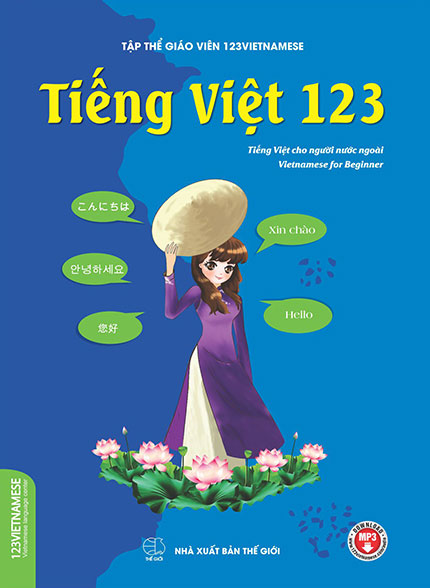
Tiếng Việt 123 (A)
Giáo trình dạy tiếng Việt cho người nước ngoài (Trình độ A)
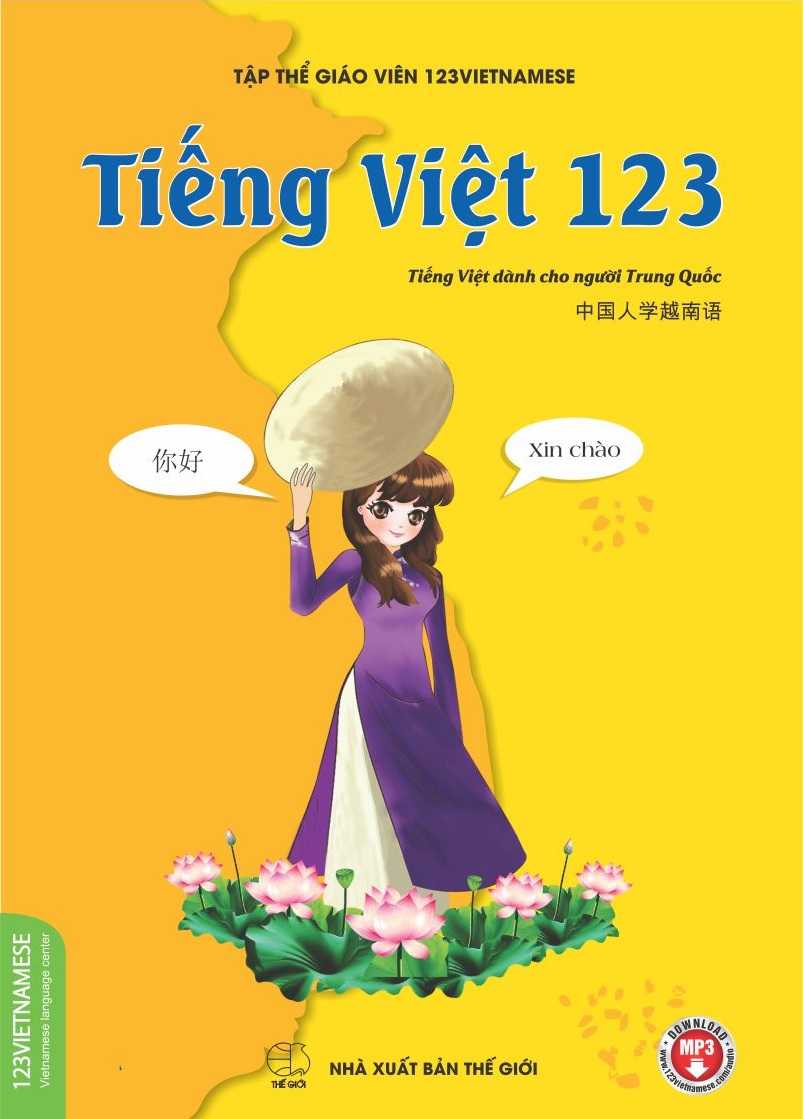
越南语123
Giáo trình dạy tiếng Việt cho người Trung Quốc, Đài Loan
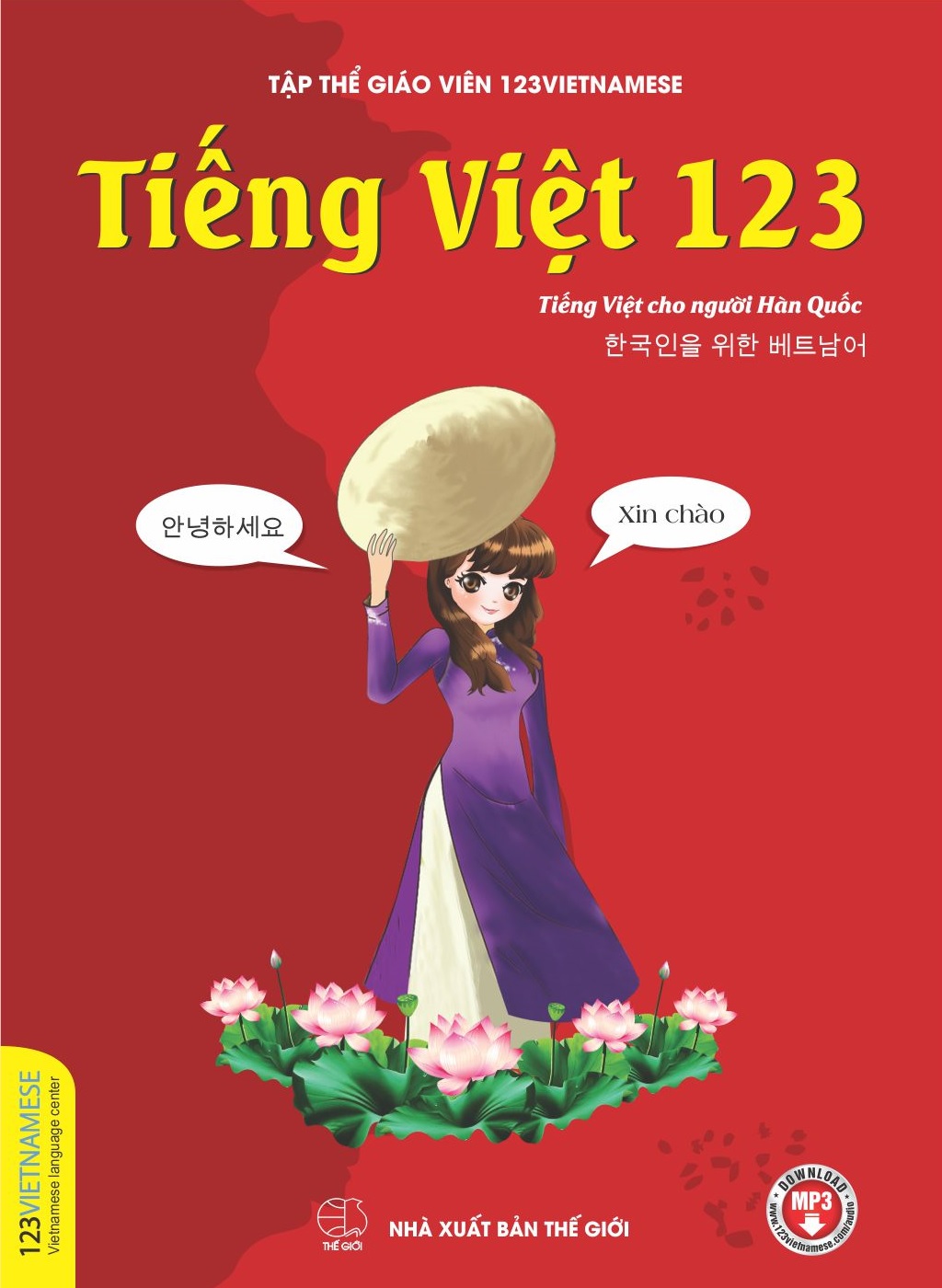
베트남어 123
Giáo trình dạy tiếng Việt cho người Hàn Quốc
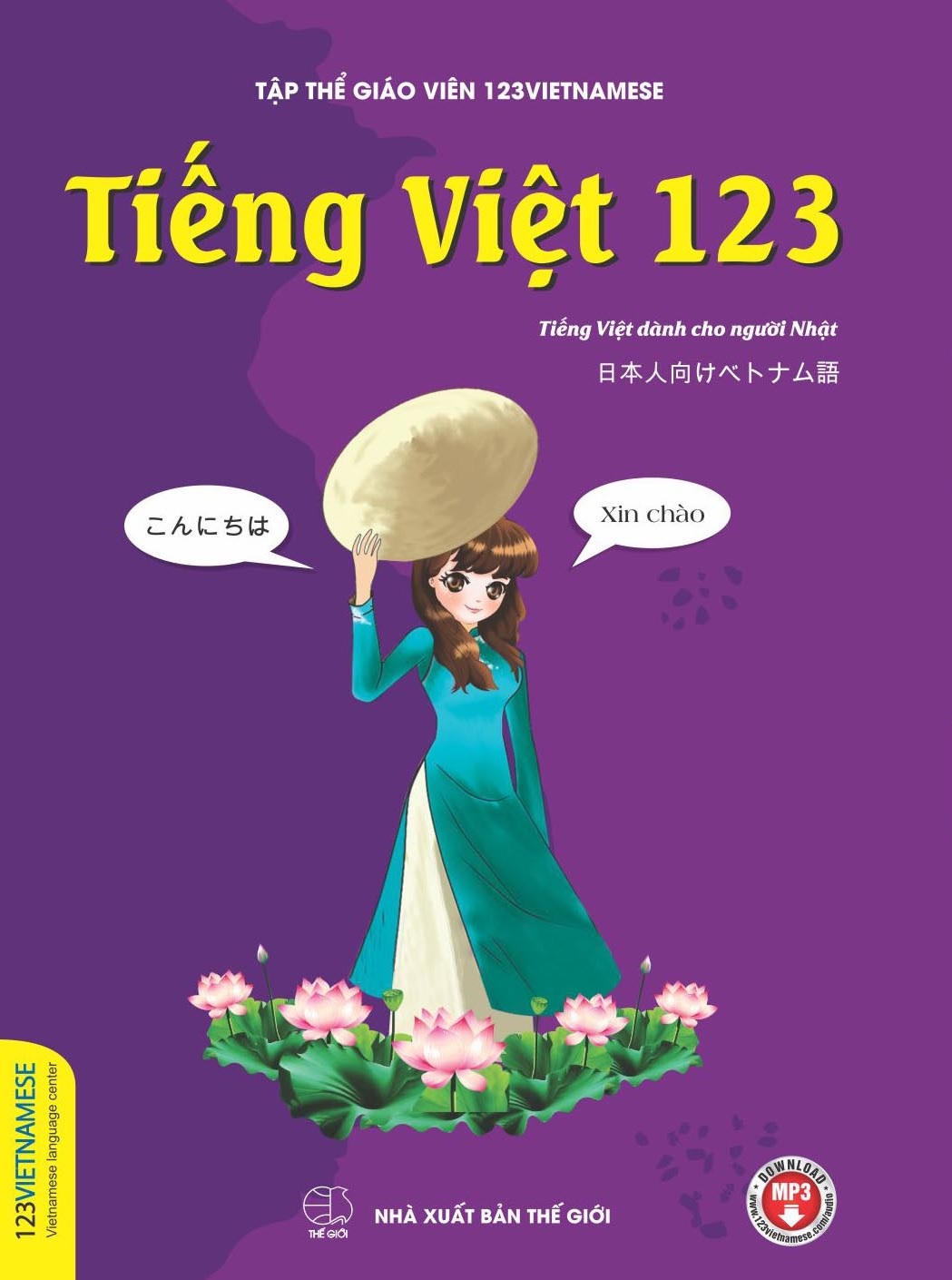
123ベトナム語
Giáo trình dạy tiếng Việt cho người Nhật Bản
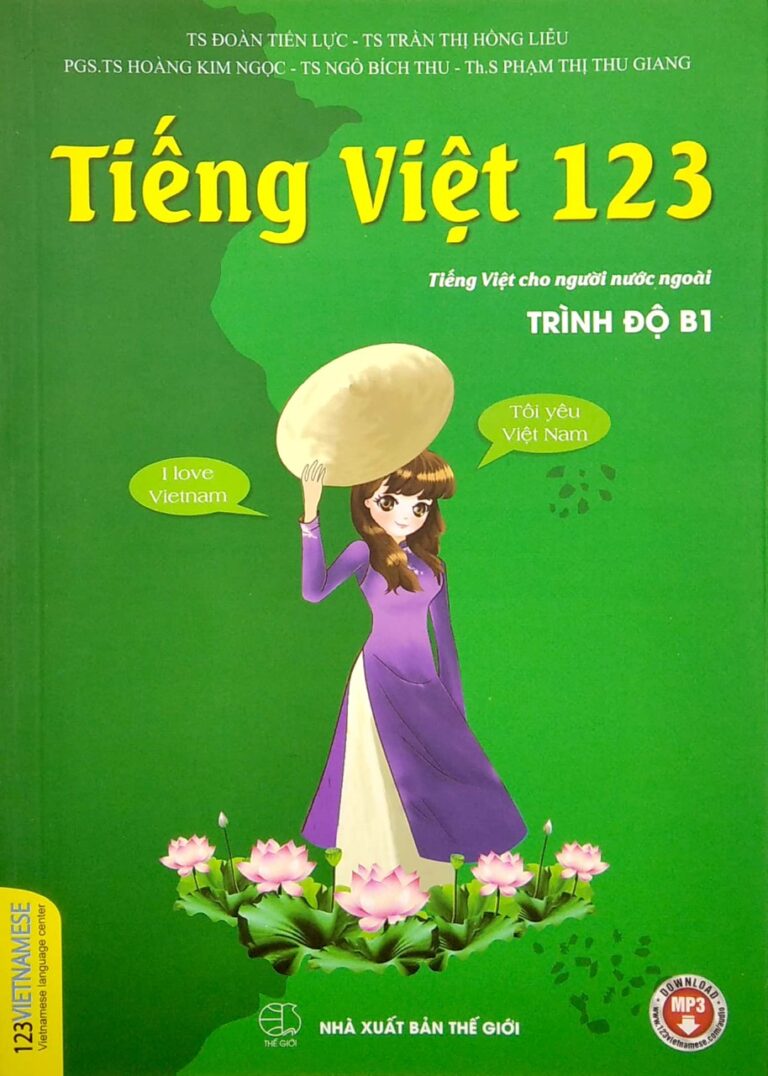
Tiếng Việt 123 (B1)
Giáo trình dạy tiếng Việt cho người nước ngoài (Trình độ B1)
Recent Posts
Recommended for You
Vietnamese Subtitle Ngày xửa ngày xưa, ở một vùng đất xa xôi có một Đức …
Vietnamese Subtitle: Đêm giáng sinh năm ấy, trời rất lạnh, đã mấy ngày liền tuyết …
